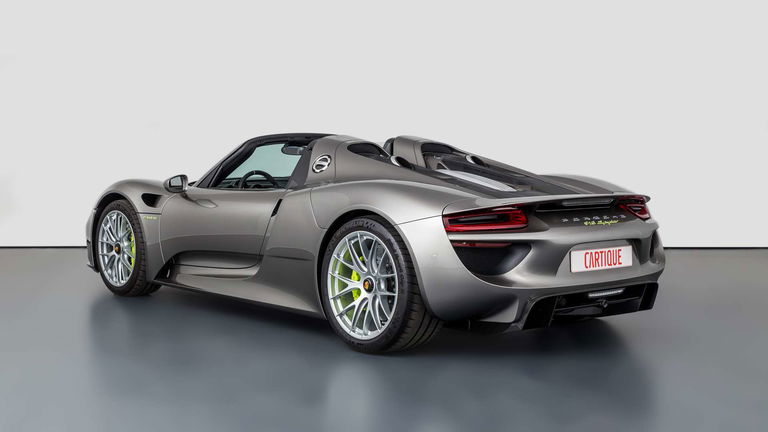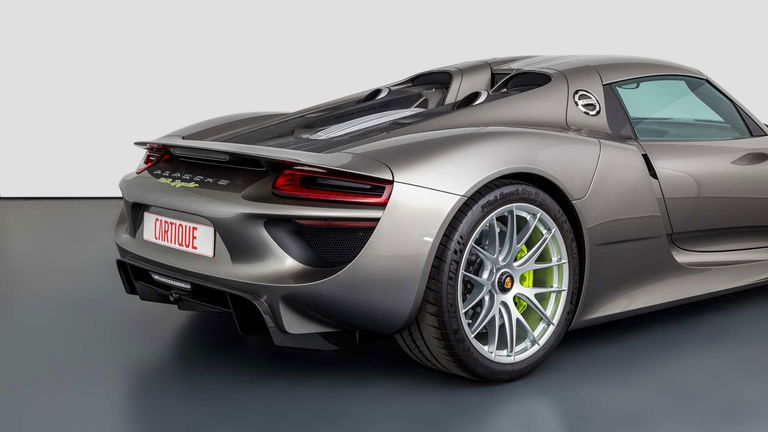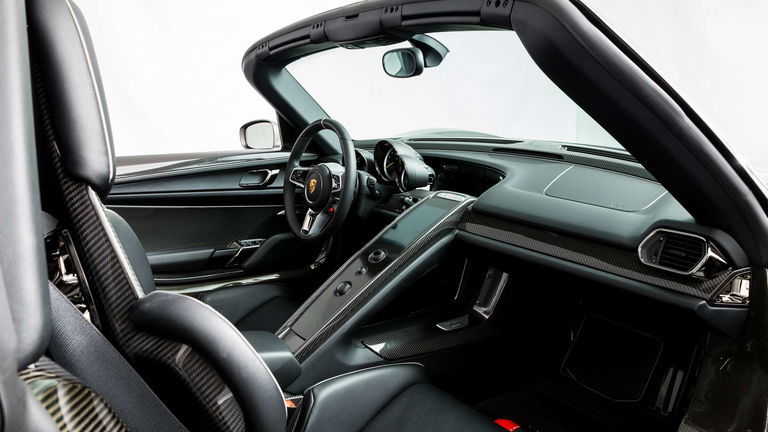The 918 Spyder therefore demonstrates the potential of the hybrid drive to a previously unknown extent: the parallel increase in efficiency and performance without one being at the expense of the other. This is the idea that has made the Porsche 911 the most successful sports car in the world for over 50 years. In short: The gene pool for the Porsche sports cars of the future is in the 918 Spyder. The 918 Spyder shows its closeness to motorsport from many perspectives. It is designed, developed and manufactured by Porsche engineers who build racing cars in cooperation with production specialists.
This means that numerous findings from the development of Porsche racing cars for the 24-hour race in Le Mans 2014 flow into the 918 Spyder – and vice versa. The structural concept of the 918 Spyder with a rolling chassis as the basis – i.e. a basic vehicle that can also be driven without a body – is a racing car tradition at Porsche. The concept of the V8 engine comes from the LMP2 racing car RS Spyder, the load-bearing structures of the monocoque and subframe are made of carbon-fibre-reinforced plastic. Porsche has many years of experience with this high-strength lightweight material and has achieved another top performance in the development of the 918 Spyder series production. Many parts of the super sports car come from manufacturers who have proven their worth as suppliers for motorsport vehicles. A core message of the 918 Spyder is: The hybrid drive from Porsche is an asset for the uncompromising driving dynamics. This can be experienced through the unique all-wheel drive concept with the combined drive from a combustion engine and electric motor on the rear axle and the second electric motor on the front axle. It is based on knowledge that Porsche has gained with the successful 911 GT3 R Hybrid in racing. Thanks to the additional, individually controllable front-wheel drive, new driving strategies for extremely high and safe cornering speeds can be implemented, especially when cornering. In addition, there is the further developed "Boost" strategy, which controls the energy balance of the electric drive so intelligently that for every sprint with full acceleration, the unrestricted overall performance of the 918 Spyder can be called up simply by fully pressing the accelerator pedal. In short: the 918 Spyder also opens up an extended longitudinal and lateral dynamic experience potential for drivers without motor sport training. The Porsche 918 Spyder also has the potential to break many records. The current lap time on the Nordschleife of the Nürburgring is 7:14 minutes. This time was achieved in the presence of international journalists during test drives in September 2012, more than a year before the start of production. This put the 918 Spyder prototype around 20 seconds faster than the Porsche Carrera GT. Further test drives on the Nürburgring-Nordschleife follow. Even more important: At the same time, the 918 Spyder far surpasses its predecessors and competitors in terms of efficiency. As a plug-in hybrid vehicle, it consistently combines the dynamics of a racing machine with more than 880 hp with a consumption of around three liters per 100 kilometers in the NEDC, which is still below that of most of today's small cars. Conclusion: maximum driving pleasure with minimum consumption. The 918 Spyder continues the series of super sports cars in the history of Porsche, which, as technology carriers, drove emotion and evolution in equal measure and were the ultimate sports cars of their decade: The Carrera GTS, the first Porsche Turbo, the 959, the 911 GT1, the Carrera GT . Even more than any of its predecessors, the 918 Spyder provides decisive impetus for the further development of technologies for the vehicle concepts of the future. Overall, it offers all the components of the Porsche DNA in an unprecedented concentration.






































